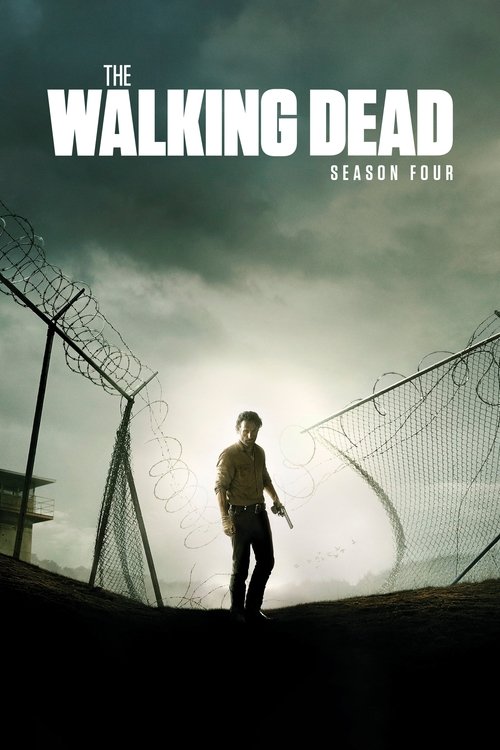
Ask Your Own Question
What is the plot?
The season opens with the group at the prison, which has become a semblance of a community. Rick Grimes is trying to maintain order and safety while dealing with the challenges of survival. The group is farming and trying to live a normal life despite the constant threat of walkers. However, tensions are rising as they face the reality of limited resources and the strain of living in close quarters.
One day, a group of survivors, led by a man named Patrick, arrives at the prison seeking refuge. They are welcomed, but soon after, Patrick is bitten by a walker and dies, turning into one himself. This incident sparks fear among the group, leading to discussions about the safety of their home. The group begins to realize that they need to be more vigilant about the threat of walkers and the potential for illness.
As the season progresses, a mysterious illness begins to spread among the group, causing several members to become sick and die. The illness is linked to the unsanitary conditions of the prison, and the group struggles to contain it. They are forced to make difficult decisions about who to quarantine and how to care for the sick. This situation creates a sense of urgency and fear, as they realize that their sanctuary is becoming a dangerous place.
Meanwhile, Carol Peletier takes on a more active role in the group, teaching the children how to defend themselves and survive. She becomes a strong figure, but her methods are questioned by others, particularly by Rick, who is trying to maintain a moral compass for the group. Carol's decisions lead to a rift between her and some of the other members, especially when she takes matters into her own hands regarding the sick.
As the illness spreads, the group faces a critical moment when they must decide whether to stay and fight for their home or leave in search of a new place. Rick, feeling the weight of leadership, ultimately decides that they must leave the prison. This decision is met with mixed emotions, as some members are reluctant to abandon the only home they have known.
The group sets out on the road, facing the harsh realities of the world outside the prison. They encounter various challenges, including run-ins with walkers and other hostile survivors. During this time, they also face internal conflicts, as differing opinions on leadership and survival strategies create tension within the group.
As they travel, they come across a mysterious group known as the Governor's followers, who are still loyal to him after his defeat in the previous season. The Governor, having survived, is plotting his revenge against Rick and the group. He gathers his followers and begins to plan an attack on the prison, seeking to reclaim it as his own.
In a shocking turn of events, the Governor confronts the group at the prison. He uses a combination of manipulation and violence to try to take control. The confrontation escalates into a brutal battle, with both sides suffering casualties. The Governor's tactics are ruthless, and he ultimately kills several members of Rick's group, including Hershel Greene, who is beheaded in front of the others, causing deep emotional scars.
The battle ends with the prison being overrun by walkers, forcing the group to flee. In the chaos, they are separated, and many are left to fend for themselves. Rick, now more hardened and determined, leads a small group away from the prison, while others are left to navigate the dangers of the world alone.
As the season progresses, the group struggles to reunite and find safety. They encounter new characters, including a woman named Michonne, who becomes a key ally. The emotional toll of their losses weighs heavily on them, and they must confront their grief while continuing to fight for survival.
The season culminates in a series of intense confrontations and emotional moments as the group grapples with their new reality. They are forced to confront not only the external threats of walkers and hostile survivors but also the internal conflicts that arise from their experiences. The season ends with the group still searching for a place to call home, leaving their future uncertain and fraught with danger.
What is the ending?
In the ending of Season 4 of The Walking Dead, the group of survivors faces a devastating confrontation at the Terminus compound. Rick, Daryl, Michonne, and the others are captured by a group of cannibals. They manage to escape, leading to a violent showdown. The season concludes with the group reuniting but facing an uncertain future as they realize the world is still filled with danger.
As the final episodes of Season 4 unfold, the tension escalates dramatically. The group, having been separated and scattered, is drawn together again, but not without significant trials.
In the penultimate episode, titled "A," Rick, Daryl, Michonne, and the others find themselves trapped in a train car at Terminus, a supposed sanctuary. The atmosphere is thick with dread as they hear the sounds of their captors outside, who are revealed to be cannibals. The group is terrified, but Rick's determination to protect his son Carl and the others fuels his resolve.
The scene shifts to the captors, who are shown preparing for a gruesome meal, hinting at the fate that awaits Rick and his friends. The tension builds as the group discusses their next move, with Rick asserting that they will not go down without a fight. The emotional stakes are high, as each character reflects on their past struggles and the bonds they have formed.
In the climactic moment, Rick and the group manage to escape from the train car. They engage in a brutal confrontation with the cannibals, showcasing their survival instincts and the lengths they will go to protect one another. The fight is chaotic, filled with visceral action as Rick, fueled by rage and desperation, confronts the leader of the cannibals, Gareth. The scene is intense, with close-ups of the characters' faces reflecting their fear, anger, and determination.
As the dust settles, Rick's group emerges victorious, but not without scars--both physical and emotional. The aftermath of the battle leaves them shaken, yet they are united. The final moments of the season show the group standing together, battered but alive, as they contemplate their next steps. The camera pans out, revealing the desolate landscape around them, a stark reminder of the dangers that still lurk in their world.
In the closing scenes, we see each character's fate: Rick, now more hardened and resolute, takes on a leadership role; Daryl, still grappling with his past but finding strength in his friendships; Michonne, who has begun to heal from her emotional wounds; and Carl, who is growing into a young man shaped by the harsh realities of their existence. The season ends on a note of uncertainty, emphasizing that while they have survived this battle, the war for their humanity and safety continues.
Is there a post-credit scene?
In Season 4 of The Walking Dead, there is no post-credit scene following the episodes. The season concludes with the episode titled "A," which wraps up the story arcs without any additional scenes after the credits. The focus remains on the intense and emotional developments within the main narrative, particularly the struggles of the characters as they face both the external threat of walkers and the internal conflicts within their group. The absence of a post-credit scene emphasizes the gravity of the events that transpired throughout the season, leaving viewers with a sense of closure while also setting the stage for the challenges to come in the next season.
What happens to the prison community after the Governor attacks?
After the Governor attacks the prison, the community is thrown into chaos. The assault leads to significant casualties, including the deaths of key characters like Hershel Greene. The survivors are forced to flee, scattering into the woods and facing the dangers of both walkers and the Governor's wrath.
How does Carol's character evolve throughout Season 4?
Carol's character undergoes a significant transformation in Season 4. Initially seen as a nurturing figure, she becomes more hardened and pragmatic after the loss of her daughter, Sophia. She takes on a more active role in the group's survival, even making the difficult decision to kill Karen and David to prevent the spread of a deadly flu, showcasing her moral complexity.
What is the significance of the flu outbreak in the prison?
The flu outbreak in the prison serves as a critical plot device that highlights the fragility of the survivors' situation. It creates tension and urgency as characters like Glenn and others become infected. The outbreak also leads to the deaths of several characters and sets the stage for the Governor's attack, illustrating how external threats can compound the internal struggles of the group.
What motivates the Governor to return and attack the prison?
The Governor's motivation to return and attack the prison stems from his desire for power and control. After losing his community and experiencing a personal breakdown, he seeks revenge against Rick's group, whom he sees as a threat to his vision of a safe haven. His obsession with reclaiming a sense of authority drives him to orchestrate a brutal assault on the prison.
How does the relationship between Rick and Carl change in Season 4?
In Season 4, the relationship between Rick and Carl becomes strained as they navigate the harsh realities of survival. Rick struggles with his role as a leader and father, while Carl grapples with his own emerging identity and the need to be more independent. Their dynamic shifts as Carl begins to take on more responsibility, leading to moments of tension but also growth as they learn to rely on each other in a world filled with danger.
Is this family friendly?
"The Walking Dead," Season 4, is not considered family-friendly due to its intense themes and graphic content. Here are some potentially objectionable or upsetting aspects that may affect children or sensitive viewers:
-
Graphic Violence: The show features numerous scenes of intense violence, including zombie attacks and human-on-human confrontations, often depicted in a bloody and gruesome manner.
-
Death and Loss: Characters frequently face death, leading to emotional scenes of grief and mourning. The impact of loss is a recurring theme that can be distressing.
-
Survival Situations: The characters are often placed in dire survival scenarios, which can evoke feelings of fear and anxiety. The moral dilemmas they face can be unsettling.
-
Emotional Turmoil: Characters experience significant emotional struggles, including fear, despair, and betrayal, which may be difficult for younger viewers to process.
-
Dark Themes: The overarching themes of hopelessness, the breakdown of society, and the moral complexities of survival in a post-apocalyptic world can be heavy and disturbing.
-
Disturbing Imagery: The show includes unsettling imagery of decaying corpses and the aftermath of violence, which can be graphic and disturbing.
These elements contribute to a mature viewing experience that may not be suitable for children or sensitive individuals.
































